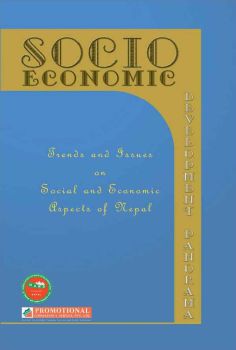Rates Determining Nepalese Foreign Trade
Keywords:
Trade deficits, Foreign trade, Exchange rate, Inflation rate, Macroeconomic rateAbstract
Trade deficit has to be subsidized by precious foreign exchange earned as remittance, compensation from tourism and indirectly from foreign aid (grants as well as loan). Built-in-stabilizer has been demobilized by the existing pegged exchange rate with India and Nepal's sovereignty over foreign trade has been weakened. This makes it impossible to formulate and implement independent monetary and exchange rate policy in favour of domestic industries and export. Because of the fixed exchange rate regime, it is extremely difficult to predict the response of export and import to the exchange rate. There is high collinearity between the general price index of India (Wholesale Price Index) and that of Nepal (Consumer Price Index).
Socio Economic Development Panorama Vol. 1 No. 2 (2007) pp. 1-8

